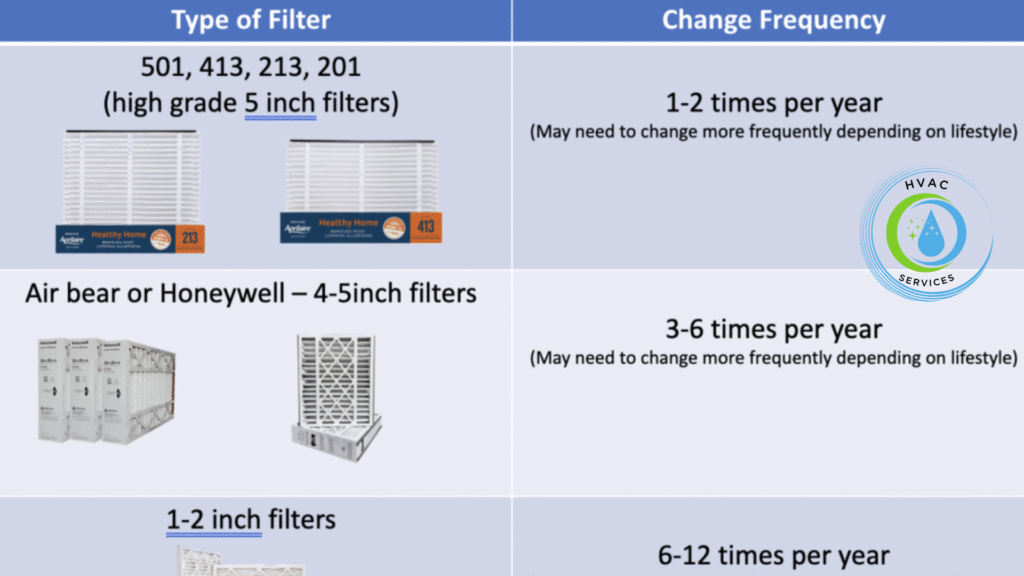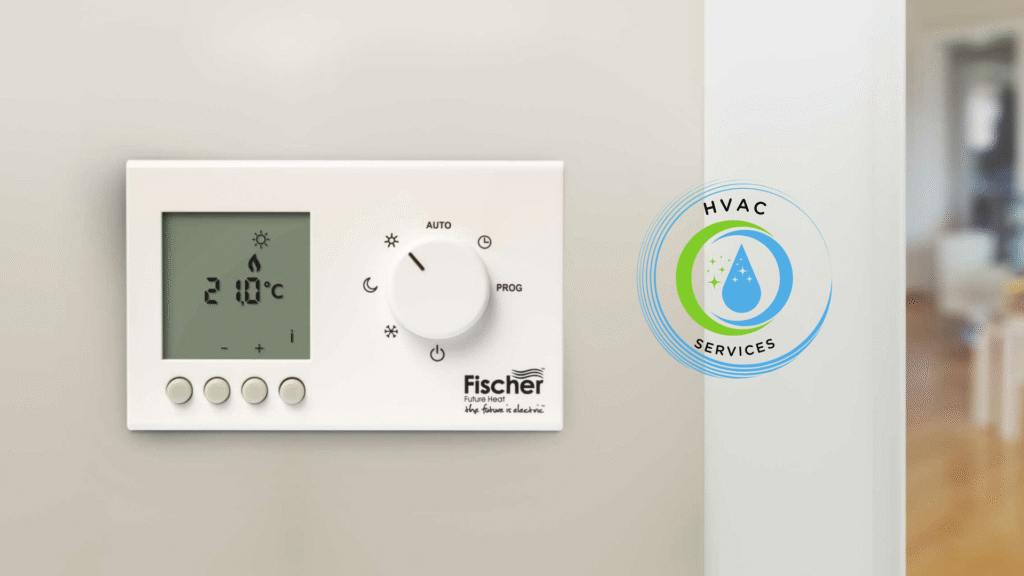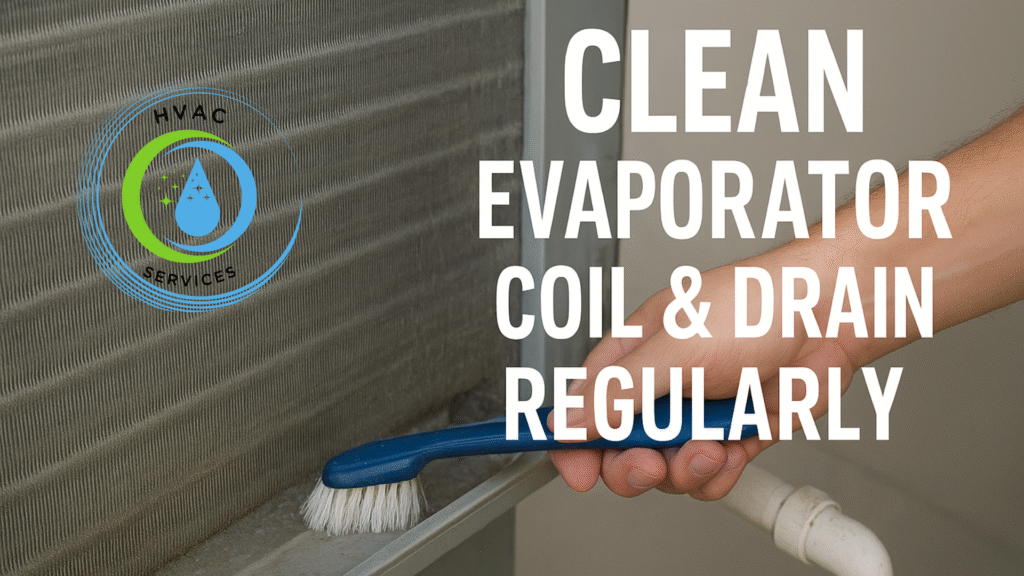As a homeowner, taking care of your DIY HVAC Maintenance doesn’t have to be complicated — with a few basic, HVAC Maintenance steps, you can keep your AC and other components running smoothly for years. From my own experience, I’ve seen how regular attention can extend the life of your units, saving both time and resources that might otherwise be spent getting parts repaired or replaced.
The most important thing is to follow preventative tips that reduce wear and down issues before they start. In this blog post, I’ll share easy methods to maintain your home comfort, showing how homeowners can ensure their system keeps performing at its best through consistent care.
Air Filters Regularly Change
One of the easiest ways to maintain your system is by keeping the air filters clean and making sure you change them regularly. When I first learned how to do this myself, I was surprised how much dust, particles, and allergens build up in the filters over time. Dirty filters block airflow, lower efficiency, and hurt system performance, making your home less healthy. Replacing them helps improve indoor air quality, boosts energy efficiency, and supports long-term equipment longevity.
To replace filters, first turn off the unit and gently remove the old one. Use a hand vacuum or microfiber cloth to lift allergens and contaminants around the vent. For a deep clean, soak washable filters in warm water mixed with vinegar, then air dry before reinstalling. Regular filter replacement and cleaning form a strong maintenance routine, improving air circulation, ventilation, and overall indoor comfort. If you notice faulty sensors or persistent air quality issues, seek professional help from an DIY HVAC Maintenance technician for peace of mind and proper purification of your household environment.

Keep Vents Open
From my years of maintaining my own diy hvac maintenance setup, I’ve learned that keeping vents and registers free from obstructions like furniture or curtains is key for smooth airflow throughout your home. When air can move freely, the heated or cooled distribution stays balanced, preventing unnecessary strain on your HVAC system.
Some homeowners think it’s a good practice to close vents in unused areas, but that’s actually detrimental—it disrupts the balance, causes increased pressure, and puts potential stress on the blower motor. This habit reduces efficiency, leads to higher energy bills, and can cause premature wear and tear. The better recommendation is to keep all vents open, directing the air where it’s needed without overloading the system.
Read More: Split AC vs Window AC
Clean Debris Dust For Outdoor Unit
Keeping your DIY HVAC Maintenance system in good shape starts with giving attention to the outdoor unit. I’ve learned from experience that when debris and dust build up, they hamper performance and make the air conditioner work harder than needed. Before you clean outdoor units, always power off the system for safety. Use a vacuum cleaner with a hose attachment to reach every corner of the fan grill and other tight areas.
You can also use a bucket of water or a hose to clean the area around unit and ensure it stays on a level ground for proper airflow. A well-maintained diy hvac maintenance will perform efficiently, reduce energy uses, and keep your home cool for years. If anything looks worn or damaged, get it inspected by an HVAC contractor to keep everything running smoothly.

Regularly Check Heating System for Leaks
When it comes to keeping your diy hvac maintenance running well, one of the most important things is to check for leaks. I once noticed strange smells and poor air quality in my house, and that was the first clue that something was wrong. A leaking condenser unit or loose ducts can cause water damage and affect how cooler or warmer your rooms feel. If your AC makes a buzzing noise or the temperature keeps fluctuating, those are signs of common problems that need quick attention.
From my own experience, the next step is to determine the source of the leak before it worsens. It could be the fan, condenser, or ducts letting out air where they shouldn’t. Sometimes, even a little water around the unit shows something deeper. While small issues can be handled with basic tools, bigger ones need a professional to fix them safely. Finding leaks early is a simple yet smart way to prevent costly repairs later.

program Your Thermostat
I’ve learned from experience that using the thermostat wisely can truly optimize your diy hvac maintenance for better efficiency and comfort all year long. Try programming it to lower the temperatures when you’re away or asleep, and raise them slightly during the winter and summer depending on your home’s needs.
This small habit helps reduce energy consumption, lower utility bills, and enhance comfort without overworking your heating or cooling units. With modern thermostat capabilities, you can easily optimize system settings to boost energy efficiency and reduce cost, all while keeping your home’s temperature perfectly balanced.

Use Ceiling Fans Properly
In my home, I’ve found that using ceiling fans and portable fans smartly can help the diy hvac maintenance systems run more smoothly and stay in good shape over time. Fans help circulate the air inside every room, keeping it cool in hot weather and warmer during colder months.
This simple trick helps maintain steady indoor comfort, supports ventilation, and makes the climate inside the house more comfortable and healthy. By keeping the airflow consistent, you can reduce the load on your heating and cooling system, improving energy efficiency and overall performance of your mechanical equipment. When fans move air year-round, they lower the perceived room temperature, helping you save energy and keep your maintenance costs low while enjoying better comfort.
Check Condensate Drain Lines for Leaks
Keeping your HVAC system in top condition means paying attention to the condensate drain lines that handle removing excess moisture from your air conditioner, heat pump, or condensing furnace. If these lines get clogged, leaks can form and cause serious water damage. Here are simple steps to inspect and maintain them effectively:
- Locate the Condensate Drain Line — Usually a PVC pipe connected to the indoor unit, often near the coils or drip pan. Knowing where it runs helps you identify any leakage or blockages early.
- Switch Off the System for Safety — Before checking anything, turn off the diy hvac maintenance system to ensure safety while working.
- Inspect Regularly — Make it a habit to inspect for visible blockages, algae, debris, or obstruction that could cause leaks or a clogged drain.
- Clear Blockages — Use a mixture of water and vinegar to clear the drain. This helps prevent mold growth and keeps the lines clean.
- Use a Brush or Vacuum — For deeper cleaning, use a brush or wet/dry vacuum. Attach the vacuum to the end of the pipe, ensure a tight seal, and use gentle suction to remove accumulated sludge.
- Check for Leaks Promptly — If you notice water pooling or dripping, address the leaks promptly to prevent further damage and mold growth.
- Check the Drip Pan — Always inspect the drip pan under the unit for signs of leakage or overflow; this is often where water collects first.
- Program the Thermostat — Keeping your thermostat properly programmed helps reduce unnecessary moisture buildup and strain on the system.
- Perform Routine Maintenance — Regular maintenance ensures that your condensate drain lines stay clear, efficient, and free from leaks.
From personal experience, regularly cleaning my condensate drain line with vinegar and checking the PVC pipe saved me from expensive water damage. It only takes a few minutes but can prevent big problems later.
keep Outdoor Compressor in Shade During Summer
When temperatures rise during hot summers, your outdoor compressor plays a major role in keeping your air conditioning system efficient. Placing the air conditioning unit in the shade can reduce load and avoid damage from direct sunlight and heat, which can make it break down quickly if placed in a sunny area.
I once moved my own outdoor placement under a small tree in my backyard oasis, and it worked in harmony with the surroundings, improving airflow and cooling efficiency. This small maintenance step offers protection from overheating, prevents refrigerant from evaporating rapidly, and ensures long-lasting performance. It’s recommended for better operation, energy savings, and overall lifespan and durability of your air conditioning system, helping it works smoothly throughout the season.

Clean Evaporator Coil & Drain Regularly
When I first started learning diy hvac maintenanceI realized how much difference a clean evaporator coil and drain make in keeping the air conditioner running smoothly. Many homeowners ignore this simple step, but a little effort saves a lot on energy bills and keeps system performance high.
I usually start by turning off the AC unit and using a vacuum cleaner with attachments like a wand, hose, and crevice tool to remove buildup or blockage that restricts airflow. Sometimes mineral deposits and condensation cause a clogged drain, which affects proper cooling and temperature control, so I use a small commercial air cleaner or mild detergent to rinse it.
This regular cleaning keeps refrigerant flow balanced, ensures better efficiency, and maintains healthy indoor air quality. By following this simple maintenance routine, you can prevent costly repairs and enjoy consistent cooling throughout the season.

Schedule Regular Professional Maintenance At Least Once A Year
From my own DIY maintenance experience, I’ve learned how vital it is to get your HVAC system serviced by a professional every year. This simple step is important to ensure that your unit keeps working in top order and any problems are fixed quickly before they worsen.
Regular service helps prevent issues, save money in the long run, and keeps your home and health safe from potential damage caused by neglected systems. By regularly checking and keeping parts up-to-date, you make sure your diy hvac maintenance stays performing at its best, giving the most efficient service possible without risking comfort or safety.
Do-It-Yourself HVAC Care and Upkeep
As a homeowner, taking charge of can save both time and money while improving your system’s efficiency and performance. From my own experience, following a regular schedule for small tasks like cleaning vents, changing filters, and observing airflow patterns ensures the unit operates smoothly and extends its lifespan.
Even without a professional or certified contractor, you can still do basic inspections to identify potential issues early, preventing costly repairs and unnecessary adjustments later. Staying consistent with this thorough approach is crucial, as it helps keep the system stable, reliable, and effective in all seasons — a habit that truly ensures long-term comfort and extends your unit’s life.
